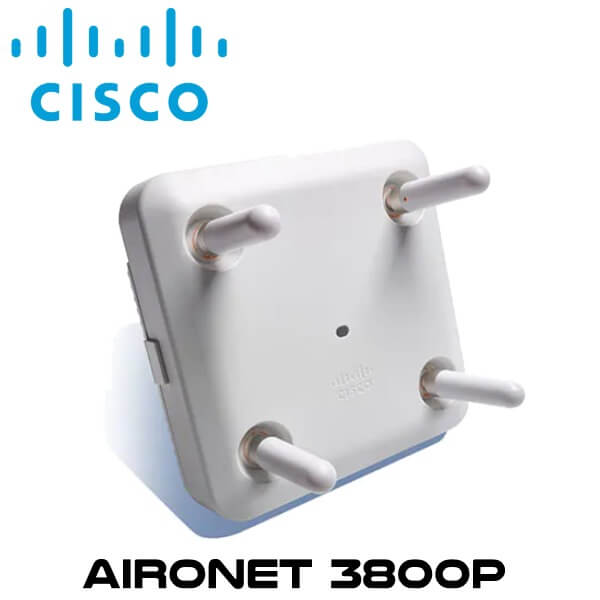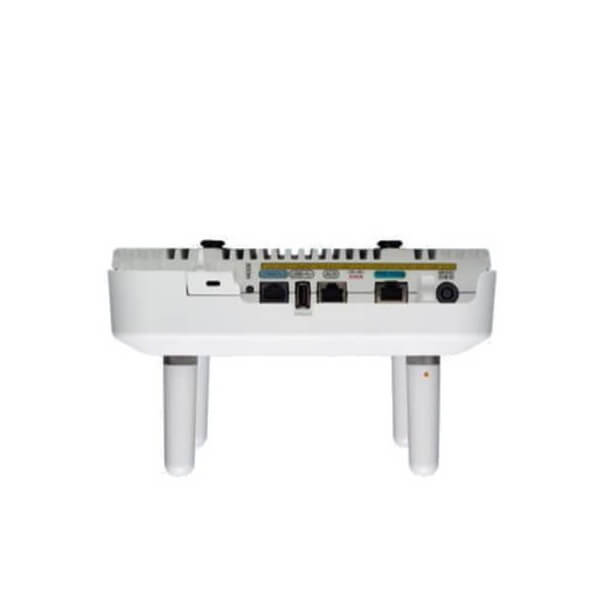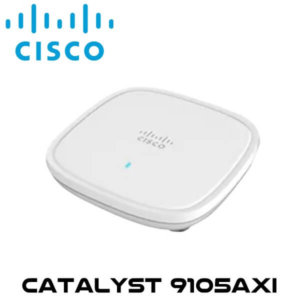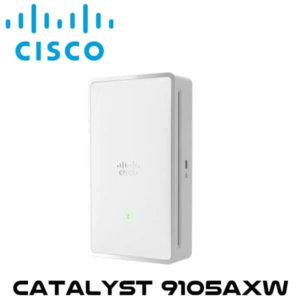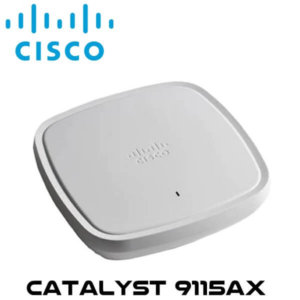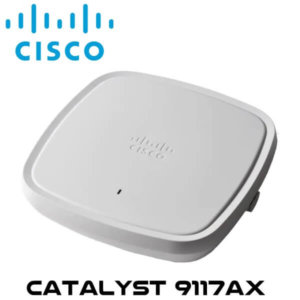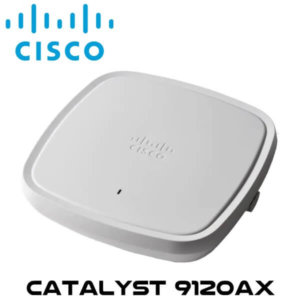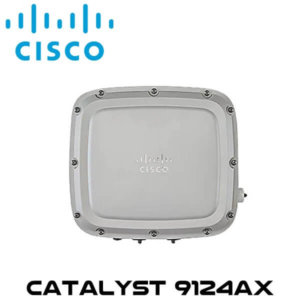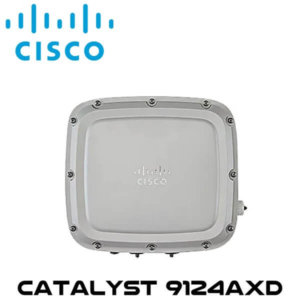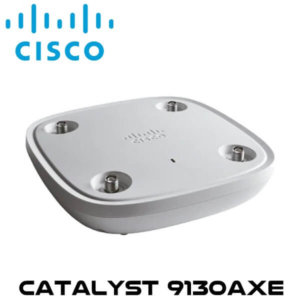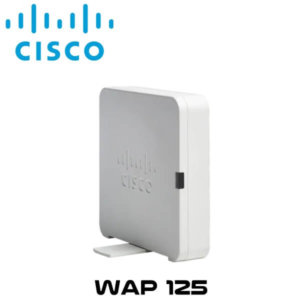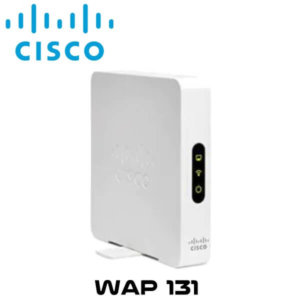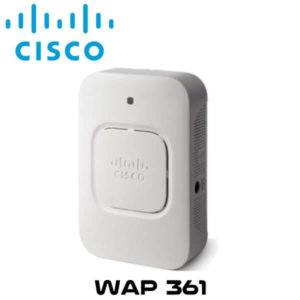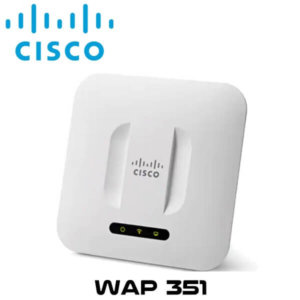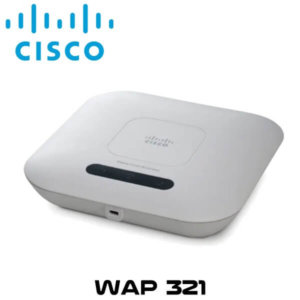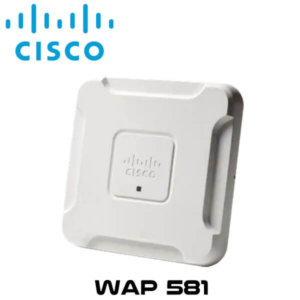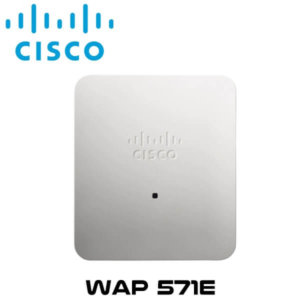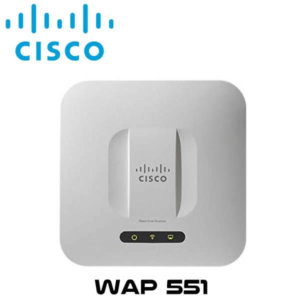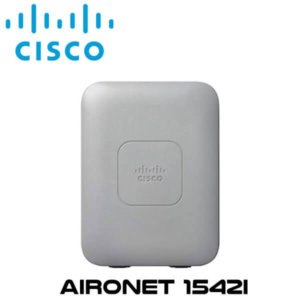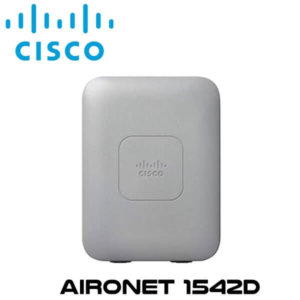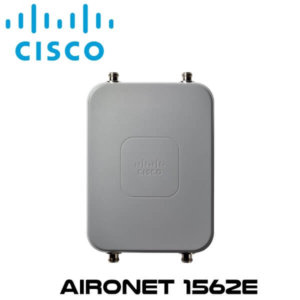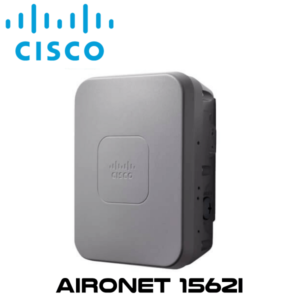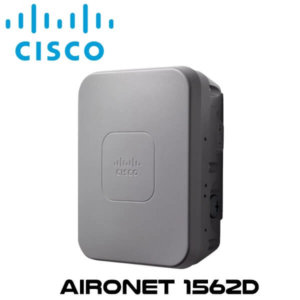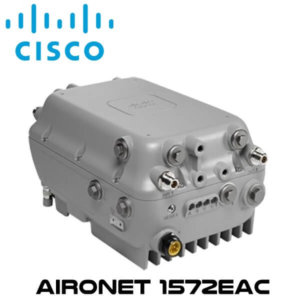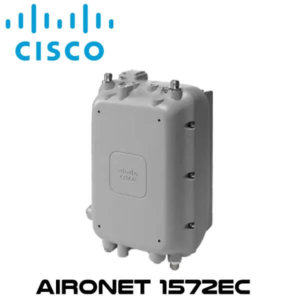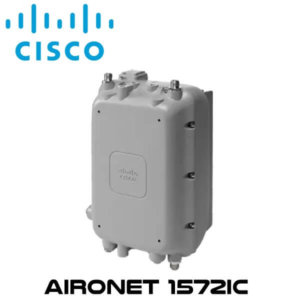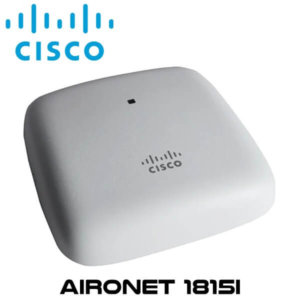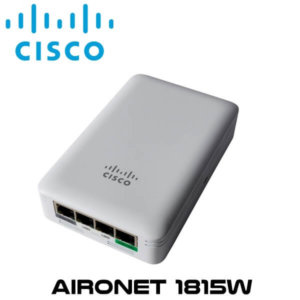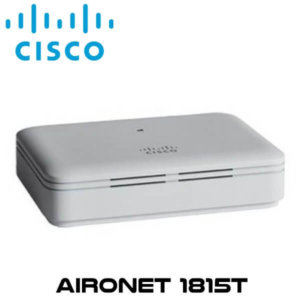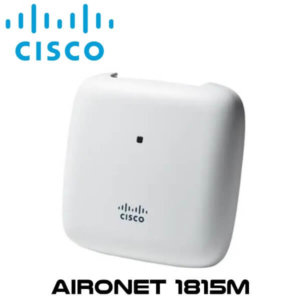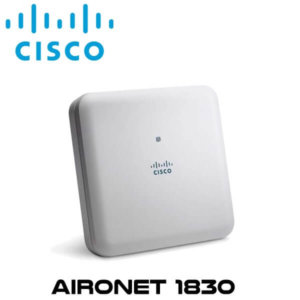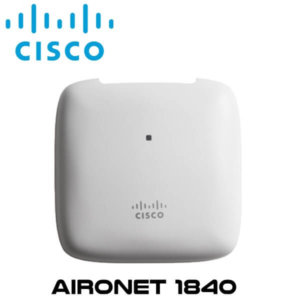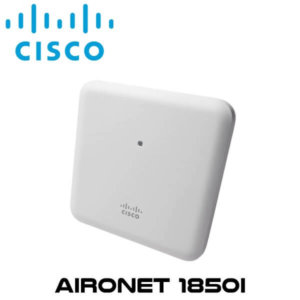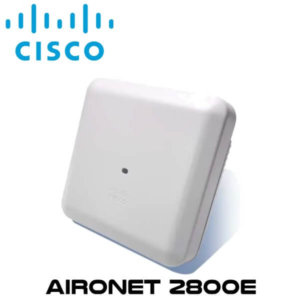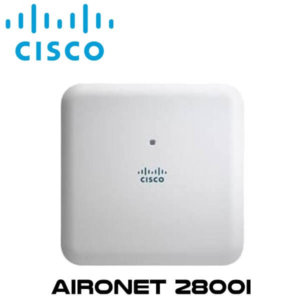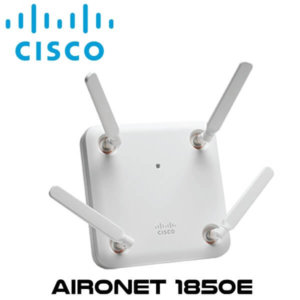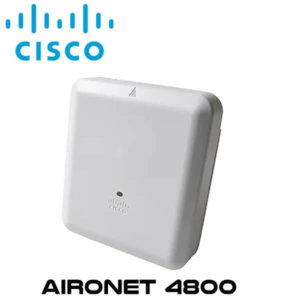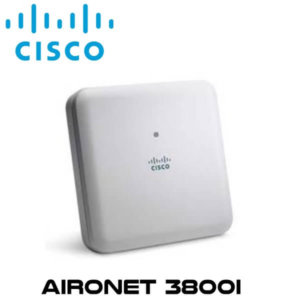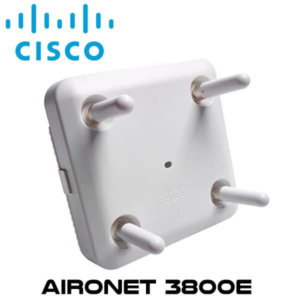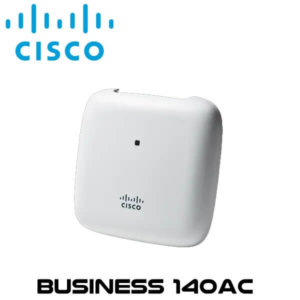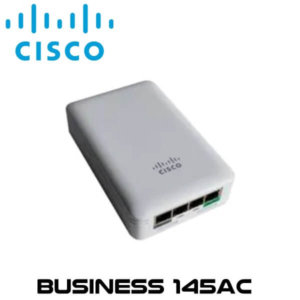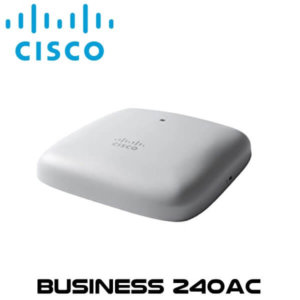Description
Cisco Aironet3800p Access Point Ghana
The Cisco Aironet3800p Ghana provides the new 802.11ac Wave 2 standard designed to secure remote workers or the micro-office. It is packed with the features and capabilities making it Cisco’s the industry leader, at a price point that is ideal for managing wireless growth, capacity, and coverage gaps in dense indoor environments. Any Cisco Aironet or Catalyst access point can function as an OfficeExtend Access Point (OEAP). With an OEAP, an employee at home or in a temporary micro-office will have access to the corporate SSID and the corporate network without the need to set up a VPN or have any advanced technical know-how.
The access points go beyond getting ready for the new standard, providing the ultimate in flexibility and versatility. For large enterprise organizations that rely on Wi-Fi to engage with customers, the 3800 Series is a hands-off product that’s intelligent enough to make decisions based on end-device activities and usage. This automation allows you to devote time to other pressing matters, secure in the knowledge that your Wi-Fi network is performing to its utmost potential. The Cisco Aironet3800p Ghana is packed with the features and capabilities that have made Cisco the industry leader, at a price point that is ideal for managing wireless growth, capacity, and coverage gaps in dense indoor environments.
Cisco User Defined Network, a feature available in Cisco DNA Center, allows IT to give end users control of their very own wireless network partition on a shared network. End users can then remotely and securely deploy their devices on this network. Perfect for university dormitories or extended hospital stays, Cisco User Defined Network grants both device security and control, allowing each user to choose who can connect to their network.
Features
802.11ac Wave 2 support
The Cisco Aironet3800p provides a theoretical connection rate of up to 2.6 Gbps per radio—roughly double the rates offered by today’s high-end 802.11ac access points
High-density experience
Cisco Aironet3800p Ghana has best-in-class RF architecture that provides high-performance coverage for a high density of client devices, giving the end user a seamless wireless experience. Features include custom hardware in 802.11ac Wave 2 radios, Cisco CleanAir®, Cisco ClientLink 4.0, cross-access point noise reduction, and an optimized client roaming experience.
Multiuser Multiple-Input Multiple-Output (MU-MIMO) technology
Cisco Aironet3800p Ghana supports three spatial streams, MU-MIMO enables access points to split spatial streams between client devices, to maximize throughput.
Multigigabit Ethernet support
Providing multiple gigabit uplink speeds of 2.5 Gbps and 5 Gbps in addition to 100-Mbps and 1-Gbps speeds. All speeds are supported on Category 5e cabling for an industry first, as well as 10GBASE-T (IEEE 802.3bz) cabling.
Flexible Radio Assignment
Cisco Aironet3800p Ghana has flexible radio assignment that intelligently determine the operating mode of serving radios based on the RF environment. The access points can operate in the following modes:
- 4-GHz and 5-GHz mode: One radio serves clients in 2.4-GHz mode, while the other serves clients in 5-GHz mode
- Dual 5-GHz mode: Both radios inside the access point operate on the 5-GHz band, maximizing the benefits of 802.11ac Wave 2 and increasing client device capacity
- Wireless Security Monitoring and 5-GHz mode: One radio serves 5-GHz clients while the other is scanning the full spectrum for attackers, RF interference, and rogue devices
Dual 5-GHz radio support
Cisco Aironet3800p Ghana enables both radios to operate in 5-GHz client serving mode, allowing an industry-leading 5.2 Gbps (2 x 2.6 Gbps) over-the-air speed while increasing client capacity
Smart antenna connector
An intelligent second physical antenna connector is included on Cisco Aironet3800p Ghana with an external antenna. This connector provides advanced network design flexibility for high-density and large open-area environments such as auditoriums, convention centers, libraries, cafeteria, and arenas/stadiums, allowing two sets of antennas to be connected and active on a single access point
Modular architecture
The new side-mount architecture allows for additional flexibility in the form factor of a Cisco Aironet3800p Ghana module, and in the choice of solutions with integrated or even external antennas of their own. We have doubled the amount of power available to Cisco Aironet3800p Ghana modules from 9W to 18W, broadening the potential module applications and solutions
160-MHz channel support
Supporting channels up to 160 MHz wide, Dynamic Bandwidth Selection allows the access point to dynamically switch between 20-, 40-, 80-, and 160-MHz channels, depending on the RF channel conditions, providing the industry’s best-performing wireless network.
Zero-impact Application Visibility and Control
Cisco Aironet3800p Ghana uses dedicated hardware acceleration to improve the performance of line-speed applications such as Cisco Application Visibility and Control
Cisco ClientLink 4.0
Cisco ClientLink 4.0 technology improves downlink performance to all mobile devices, including one-, two-, and three-spatial-stream devices on 802.11a/b/g/n/ac while improving battery life on mobile devices such as smartphones and tablets
Cisco CleanAir 160 MHz
Cisco CleanAir technology, enhanced with 160-MHz channel support, provides proactive, high-speed spectrum intelligence across 20-, 40-, 80-, and 160-MHz-wide channels to combat performance problems due to wireless interference
Cross-access point noise reduction
This Cisco WiFi Ghana boasts of Cisco innovation that enables access points to intelligently collaborate in real time about RF conditions so that users connect with optimized signal quality and performance
Optimized access point roaming
The feature ensures that client devices associate with the Cisco Aironet3800p in their coverage range that offers the fastest data rate available
Automatic link aggregation (LAG) support
802.3ad (Link Aggregation Control Protocol [LACP]) compliant, allowing both Ethernet interfaces to automatically enable LAG, increasing overall throughput to the access point.
Cisco Mobility Express
Flexible deployment mode through the Cisco Mobility Express solution is ideal for high density environments and can support up to 100 access points. Easy setup allows the Cisco Aironet3800e Ghana access points to be deployed on networks without a physical controller
Apple Features
Apple and Cisco have responded to this challenge by partnering to create an optimal mobile experience for iOS devices on corporate networks based on Cisco® technologies. Specifically, using new features in iOS 10 in combination with the latest software and hardware from Cisco, businesses can now more effectively use their network infrastructure to deliver an enhanced user experience across all business applications. At the center of the collaboration is a unique handshake between Cisco WLAN and Apple devices. This handshake enables Cisco WLAN to provide an optimal Wi-Fi roaming experience to Apple devices. Additionally, Cisco WLAN trusts Apple devices and gives priority treatment for business-critical applications specified by the Apple device.
Specifications
| Software and supported wireless LAN controllers |
|
||||||
| 802.11n version 2.0 (and related) capabilities |
|
||||||
| 802.11ac Wave 1 capabilities |
|
||||||
| 802.11ac Wave 2 capabilities |
|
||||||
| Wi-Fi Alliance Certified |
|
||||||
| Integrated antenna | Flexible radio (either 2.4 GHz or 5 GHz)
Dedicated 5-GHz radio 5 GHz, gain 5 dBi, internal antenna, omnidirectional in azimuth
|
||||||
| External antenna (sold separately) |
|
||||||
| Smart Antenna Connector |
|
||||||
| Interfaces |
|
||||||
| Indicators |
Status LED indicates boot loader status, association status, operating status, boot loader warnings, boot loader errors
|
||||||
| Dimensions (W x L x H) |
Access point (without mounting brackets) : 3802I : 8.66 x 8.68 x 2.46 in. (22 x 22 x 6.25 cm), 3802E : 8.66 x 8.68 x 2.62 in. (22 x 22 x 6.7 cm), 3802P : 8.66 x 8.68 x 2.62 in. (22 x 22 x 6.7 cm)
|
||||||
| Weight |
4.6 lb (2.09 kg)
|
||||||
| Input power requirements |
|
||||||
| Power draw |
|
||||||
| Environmental | Cisco Aironet 3800i
Cisco Aironet 3800e
Cisco Aironet 3800p
|
||||||
| System memory |
|
||||||
| Available transmit power settings | 2.4 GHz
|
5 GHz
|
|||||
| Frequency band and 20-MHz operating channels | A (A regulatory domain) :
B (B regulatory domain) :
C (C regulatory domain) :
D (D regulatory domain) :
E (E regulatory domain) :
F (F regulatory domain) :
G (G regulatory domain) :
H (H regulatory domain) :
|
I (I regulatory domain) :
K (K regulatory domain) :
N (N regulatory domain) :
Q (Q regulatory domain) :
R (R regulatory domain) :
S (S regulatory domain) :
T (T regulatory domain) :
Z (Z regulatory domain) :
|
|||||
| Maximum number of nonoverlapping channels | 2.4 GHz
|
5 GHz
|
|||||
| Compliance standards |
Radio approvals :
IEEE standards :
Security :
Multimedia :
Wi-Fi Multimedia (WMM)
Other :
|
||||||
| Warranty | Limited lifetime hardware warranty | ||||||
| Data rates supported | 802.11b : 1, 2, 5.5, and 11 Mbps | ||||||
| 802.11a/g : 6, 9, 12, 18, 24, 36, 48, and 54 Mbps | |||||||
| 802.11n HT20 : 6.5 to 216.7 Mbps (MCS0 to MCS23) | |||||||
| 802.11n HT40 : 13.5 to 450 Mbps (MCS0 to MCS23) | |||||||
| 802.11ac VHT20 : 6.5 to 288.9 Mbps (MCS0 to 8 – SS 1, MCS0 to 9 – SS 2 and 3) | |||||||
| 802.11ac VHT40 : 13.5 to 600 Mbps (MCS0 to 9 – SS 1 to 3) | |||||||
| 802.11ac VHT80 : 29.3 to 1300 Mbps (MCS0 to 9 – SS 1 to 3) | |||||||
| 802.11ac VHT160 : 58.5 to 2304 Mbps (MCS0 to 9 – SS 1 and 2, MCS0 to 8 – SS 3) | |||||||
| Transmit power and receive sensitivity | |||||||
| 5-GHz radio | 2.4-GHz flexible radio | 5-GHz flexible radio | |||||
| Spatial streams | Total Tx power (dBm) | Rx sensitivity (dBm) | Total Tx power (dBm) | Rx sensitivity (dBm) | Total Tx power (dBm) | Rx sensitivity (dBm) | |
| 802.11/11b | |||||||
| 1 Mbps | 1 | NA | NA | 23 | -101 | NA | NA |
| 11 Mbps | 1 | NA | NA | 23 | -88 | NA | NA |
| 802.11a/g | |||||||
| 6 Mbps | 1 | 23 | -93 | 23 | -91 | 23 | -92 |
| 24 Mbps | 1 | 23 | -89 | 23 | -87 | 23 | -89 |
| 54 Mbps | 1 | 23 | -81 | 23 | -77 | 22 | -80 |
| 802.11n HT20 | |||||||
| MCS0 | 1 | 23 | -93 | 23 | -91 | 23 | -93 |
| MCS4 | 1 | 23 | -88 | 23 | -86 | 23 | -87 |
| MCS7 | 1 | 23 | -79 | 23 | -77 | 22 | -78 |
| MCS8 | 2 | 23 | -93 | 23 | -91 | 21 | -93 |
| MCS12 | 2 | 23 | -86 | 23 | -85 | 23 | -86 |
| MCS15 | 2 | 23 | -79 | 23 | -77 | 21 | -78 |
| MCS16 | 3 | 23 | -93 | 23 | -91 | 23 | -92 |
| MCS20 | 3 | 23 | -85 | 23 | -84 | 22 | -84 |
| MCS23 | 3 | 23 | -78 | 23 | -76 | 18 | -77 |
| 802.11n HT40 | |||||||
| MCS0 | 1 | 23 | -90 | 23 | -89 | ||
| MCS4 | 1 | 23 | -85 | 23 | -84 | ||
| MCS7 | 1 | 23 | -76 | 23 | -75 | ||
| MCS8 | 2 | 23 | -90 | 23 | -89 | ||
| MCS12 | 2 | 23 | -83 | 23 | -83 | ||
| MCS15 | 2 | 23 | -76 | 21 | -76 | ||
| MCS16 | 3 | 23 | -90 | 23 | -89 | ||
| MCS20 | 3 | 23 | -82 | 23 | -81 | ||
| MCS23 | 3 | 23 | -75 | 20 | -74 | ||
| 802.11ac VHT20 | |||||||
| MCS0 | 1 | 23 | -93 | 23 | -92 | ||
| MCS4 | 1 | 23 | -88 | 23 | -87 | ||
| MCS7 | 1 | 23 | -82 | 22 | -80 | ||
| MCS8 | 1 | 23 | -77 | 21 | -75 | ||
| MCS0 | 2 | 23 | -93 | 23 | -91 | ||
| MCS4 | 2 | 23 | -86 | 23 | -84 | ||
| MCS7 | 2 | 23 | -79 | 21 | -77 | ||
| MCS8 | 2 | 23 | -75 | 20 | -73 | ||
| MCS9 | 2 | NA | NA | NA | NA | ||
| MCS0 | 3 | 23 | -93 | 23 | -91 | ||
| MCS4 | 3 | 23 | -85 | 22 | -83 | ||
| MCS7 | 3 | 23 | -78 | 20 | -76 | ||
| MCS8 | 3 | 23 | -74 | 19 | -72 | ||
| MCS9 | 3 | 23 | -72 | 18 | -70 | ||
| 802.11ac VHT40 | |||||||
| MCS0 | 1 | 23 | -90 | 23 | -89 | ||
| MCS4 | 1 | 23 | -85 | 23 | -84 | ||
| MCS7 | 1 | 23 | -78 | 22 | -77 | ||
| MCS8 | 1 | 23 | -75 | 21 | -73 | ||
| MCS9 | 1 | 23 | -73 | 20 | -72 | ||
| MCS0 | 2 | 23 | -90 | 23 | -89 | ||
| MCS4 | 2 | 23 | -83 | 23 | -82 | ||
| MCS7 | 2 | 23 | -76 | 21 | -75 | ||
| MCS8 | 2 | 23 | -73 | 20 | -72 | ||
| MCS9 | 2 | 23 | -71 | 19 | -69 | ||
| MCS0 | 3 | 23 | -90 | 23 | -89 | ||
| MCS4 | 3 | 23 | -82 | 23 | -80 | ||
| MCS7 | 3 | 23 | -74 | 20 | -73 | ||
| MCS8 | 3 | 23 | -70 | 19 | -68 | ||
| MCS9 | 3 | 23 | -69 | 18 | -67 | ||
| 802.11ac VHT80 | |||||||
| MCS0 | 1 | 23 | -87 | 23 | -86 | ||
| MCS4 | 1 | 23 | -83 | 23 | -81 | ||
| MCS7 | 1 | 23 | -76 | 22 | -74 | ||
| MCS8 | 1 | 23 | -72 | 21 | -70 | ||
| MCS9 | 1 | 23 | -69 | 20 | -68 | ||
| MCS0 | 2 | 23 | -87 | 23 | -86 | ||
| MCS4 | 2 | 23 | -80 | 23 | -79 | ||
| MCS7 | 2 | 23 | -73 | 21 | -72 | ||
| MCS8 | 2 | 23 | -69 | 20 | -68 | ||
| MCS9 | 2 | 23 | -67 | 19 | -66 | ||
| MCS0 | 3 | 23 | -87 | 23 | -86 | ||
| MCS4 | 3 | 23 | -77 | 23 | -77 | ||
| MCS7 | 3 | 23 | -72 | 20 | -70 | ||
| MCS8 | 3 | 23 | -67 | 19 | -66 | ||
| MCS9 | 3 | 22 | -65 | 18 | -64 | ||
| 802.11ac VHT160 | |||||||
| MCS0 | 1 | 23 | -83 | 23 | -83 | ||
| MCS4 | 1 | 23 | -78 | 23 | -78 | ||
| MCS7 | 1 | 23 | -71 | 22 | -71 | ||
| MCS8 | 1 | 23 | -67 | 21 | -68 | ||
| MCS9 | 1 | 23 | -66 | 20 | -66 | ||
| MCS0 | 2 | 23 | -83 | 23 | -83 | ||
| MCS4 | 2 | 23 | -76 | 23 | -76 | ||
| MCS7 | 2 | 23 | -69 | 21 | -69 | ||
| MCS8 | 2 | 23 | -65 | 20 | -66 | ||
| MCS9 | 2 | 23 | -63 | 19 | -63 | ||
| MCS0 | 3 | 23 | -82 | 23 | -83 | ||
| MCS4 | 3 | 23 | -74 | 22 | -74 | ||
| MCS7 | 3 | 23 | -67 | 20 | -68 | ||
| MCS8 | 3 | 23 | -62 | 19 | -62 | ||


